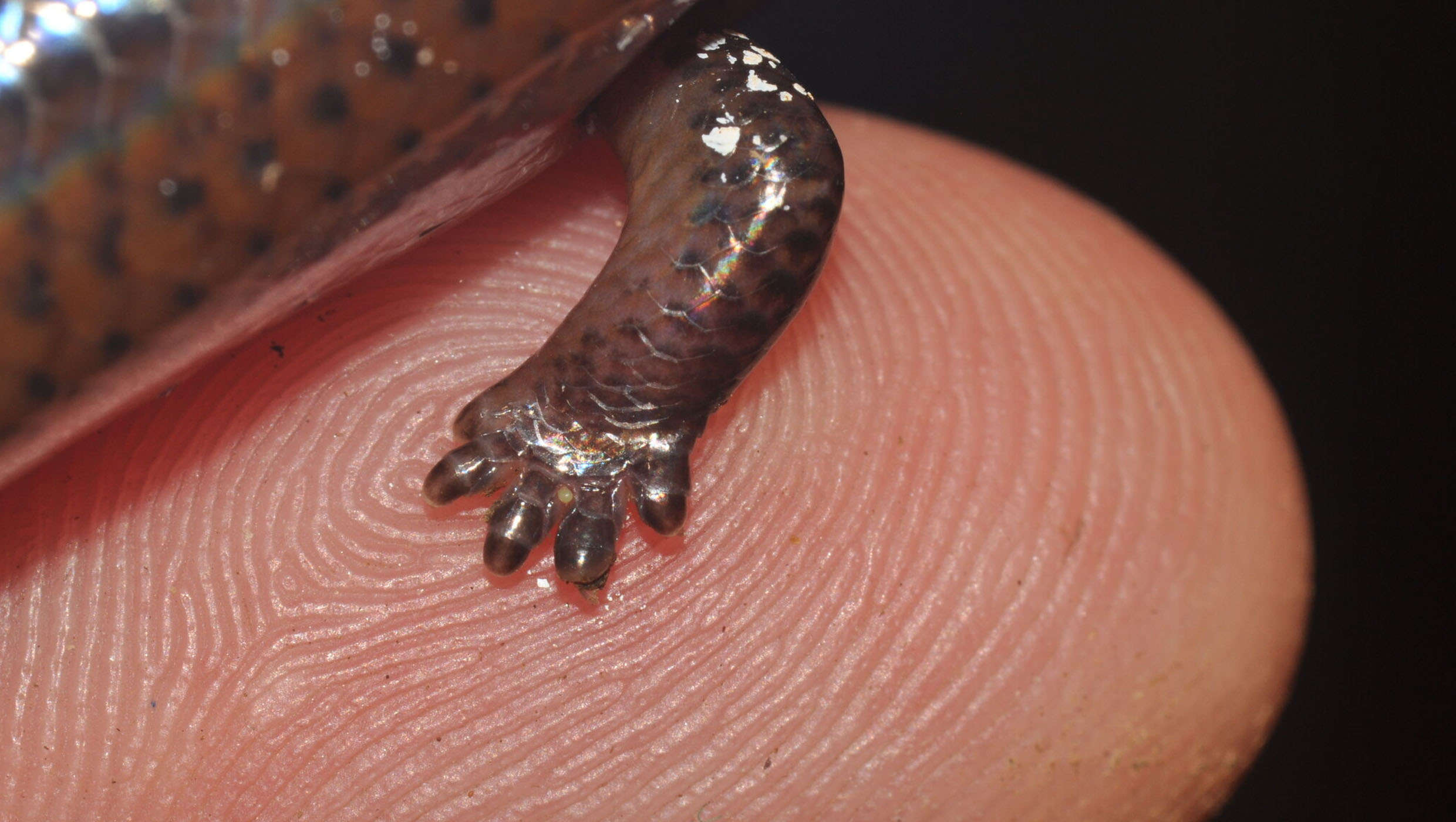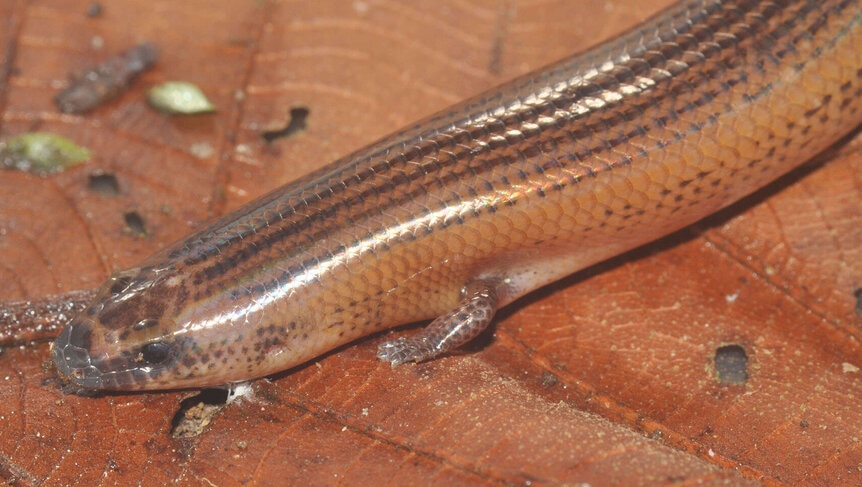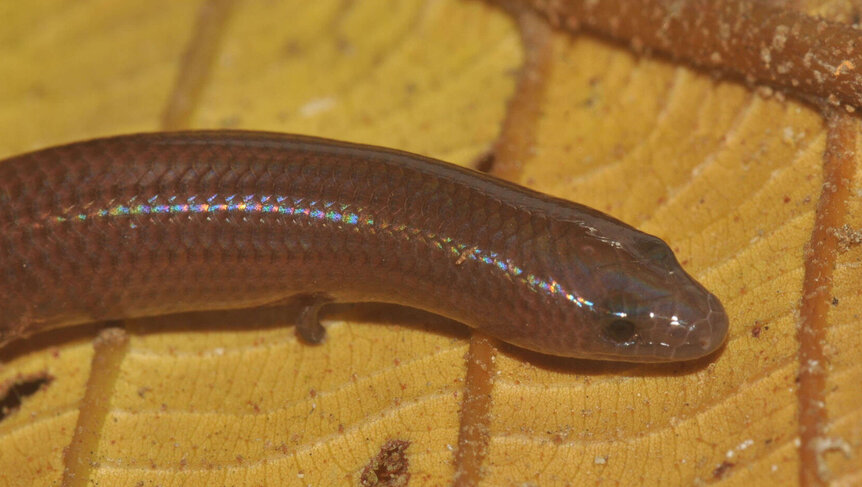Create a free profile to get unlimited access to exclusive videos, sweepstakes, and more!
Some lizards that evolved to lose their legs eerily re-evolved them

When it comes to evolution, is it really “use it or lose it”?
It usually is—but there are some exceptions. While most things that devolve tend to vanish forever, these genetic ghosts sometimes materialize again when they are needed. Some cases (like vestigial tails on humans) are rare DNA mishaps. Others are necessary for survival. Skinks are lizards that went through devolution and re-evolution. They supposedly no longer needed legs until climate change had them reverting from their legless form back to their legged form, as biologist Philip Bergmann found out through his research on these peculiar creatures.
Lizards which are more snakelike use less force to burrow. This is ideal for sand or loose dry soil, but legged lizards that live in areas where the soil is denser or wetter need much more force to dig if they want shelter and protection from predators. Legs can do that.
“It is likely that some limb developmental gene then doesn’t get expressed when it should,” Bergmann, who led a study recently published in Proceedings of the Royal Society B, told SYFY WIRE. “It seems that some limb development got essentially switched off, and likely then got switched back on, but we don’t yet have conclusive evidence for exactly how this happened."
62 million years ago, skinks in Southeast Asia lost their legs. The burrowing reptiles just didn’t need them anymore. They could easily slink across and escape into what was then much looser, drier soil without the use of legs to help them push through, so the legs eventually disappeared. However, climate on Earth has never been totally consistent, even before humans were around to sabotage it. Southeast Asia would become a land of monsoons and mud around 40 million years ago. Things may go extinct when they can no longer handle conditions around them. Some skinks amazingly grew their legs back to give them an edge in digging through ground that was denser and much more slippery.
DNA is capable of some pretty mind-blowing things. When Bergmann and his research team examined embryos of Brachymeles lukbani, a species of skink without limbs, they found that they actually started to develop limb buds in the embryonic phase. This is where he believes certain genes start switching off, and legs cannot happen without leg genes being expressed.
“The idea is that a rudiment of the limb does start to develop, but these limb buds degenerate before birth,” Bergmann said. “Many genes involved in the development of limbs are also involved in the development of other structures—something called pleiotropy. Therefore, there is likely strong selection for these genes to be maintained and not disappear/degenerate due to mutation.”
When changes happen in DNA that controls when and where the genes are expressed, but does not actually code them, that might be what is switching off the limb genes depending on the type of skink. What is even stranger is that different species living in the same rainforests range from nearly legless to fully legged. They might even live in the same part of the rainforest, but one has legs while the other barely does. It seems to go against the evolutionary need for legs after the climate became wetter. Bergmann believes that where certain species of skink fit in could explain how much of their legs they got back.
“We think that when things got wet, different species evolved to fill different ecological niches,” he said.
The nearly legless species of skink are smaller, slower and more elusive. Survival can depend on hiding when you don’t have size or speed (or legs) on your side. Snakes may have no legs, but some have enough muscle to choke and swallow an entire deer while others are fast to lunge forward and inject their prey with deadly venom. Skinks that are more snakelike have neither of these advantages. They only go after prey that is easy to snap up, such as ant and termite larvae. Those skinks which re-evolved limbs, especially species with five fingers and five toes, are larger, faster and more daring in catching a meal. Sometimes they will even eat other lizards.
Could skinks that are somewhere between legless and legged still be evolving? Maybe. There are possibly creatures evolving right in front of our eyes without us having any idea about it. An existing creature that hasn’t reached its final form is not impossible, and there is one species of skink literally evolving right now, but other skinks which barely have something that could pass for legs might have already evolved as far as they could go.
“It is tempting to think of these intermediate species as somehow in the process of evolving one way or the other,” said Bergmann. “However, species such as these have persisted for millions of years, and it is important to realize that they too are successful in their environment, so are adapted to it.”
So don’t worry, humans probably won’t be growing tails anytime soon.
















